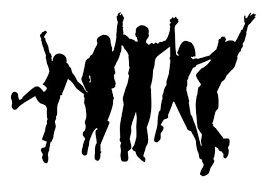Nonverbal Communication: Understanding the Silent Language
Hello there! I'm AckySHINE, your friendly guide to improving your communication and interpersonal skills. Today, let's dive into the fascinating world of nonverbal communication - a silent language that speaks volumes without uttering a single word. 🗣️🚫
-
Facial Expressions: Our faces are like emoticon keyboards, expressing joy, sadness, anger, surprise, and everything in between. 😃😢😡😲 As AckySHINE, I recommend paying attention to your own facial expressions and being aware of the messages they convey to others.
-
Body Language: The way we use our bodies can say more than words ever could. Think about how a confident posture or a slumped stance can impact the perception others have of you. 💪🧘♀️ As AckySHINE, I advise you to be mindful of your body language and ensure it aligns with the message you want to convey.
-
Gestures: Hand movements, nods, and shrugs can add depth and clarity to your conversations. For example, pointing at something can indicate direction, while nodding can show agreement. 🙌👍🖐️ As AckySHINE, I recommend using gestures effectively to enhance your communication.
-
Eye Contact: The eyes truly are the windows to the soul. Maintaining eye contact shows attentiveness and openness, while avoiding it may give the impression of disinterest or even dishonesty. 👀🔍 As AckySHINE, I suggest mastering the art of eye contact to establish trust and connection with others.
-
Proximity: The distance between you and the person you are communicating with can also convey a message. Standing too close may invade personal space, while standing too far may create a sense of detachment. 🚶♀️👥 As AckySHINE, I advise being mindful of the appropriate proximity for different social situations.
-
Touch: A simple touch can communicate warmth, empathy, or even aggression. A gentle pat on the back can convey support, while an unexpected grab can indicate hostility. ✋🤗😠 As AckySHINE, I recommend being aware of the impact touch can have and respecting others' boundaries.
-
Tone of Voice: The way we say something can completely change its meaning. A sarcastic tone can turn a compliment into an insult, while a gentle tone can make a reprimand feel more constructive. 🗣️🎭 As AckySHINE, I suggest practicing different tones of voice to effectively convey your intended message.
-
Silence: Sometimes, silence speaks louder than words. Pausing before answering a question can demonstrate thoughtfulness, while an uncomfortable silence can create tension. 🤐🤫 As AckySHINE, I recommend embracing silence as a powerful tool in your communication toolkit.
-
Microexpressions: These fleeting facial expressions can reveal our true emotions, even when we try to hide them. For example, a brief flash of anger or fear may betray our true feelings. 😯😠 As AckySHINE, I encourage you to pay attention to microexpressions to gain deeper insight into others' emotions.
-
Cultural Differences: Nonverbal cues can vary across cultures. For example, a thumbs-up gesture may be positive in some countries but offensive in others. 👍👎 As AckySHINE, I urge you to educate yourself about cultural differences to avoid misunderstandings and foster effective communication.
-
Mirroring: Mirroring someone's body language and gestures can create a sense of rapport and connection. It shows that you are attentive and engaged in the conversation. 🤝💃 As AckySHINE, I recommend incorporating mirroring into your interactions to build stronger relationships.
-
Context: Nonverbal cues should always be interpreted in the context in which they occur. For instance, a smile in a social gathering may signify happiness, but the same smile in a funeral setting would be inappropriate. 🎉😔 As AckySHINE, I remind you to consider the context to understand nonverbal cues accurately.
-
Congruence: Nonverbal cues should align with verbal messages to create effective communication. If someone is saying "I'm fine" with tears streaming down their face, their nonverbal cues reveal a different story. 🙅♀️😢 As AckySHINE, I emphasize the importance of congruence between verbal and nonverbal communication.
-
Observation: Developing the skill of observing nonverbal cues requires practice and attentiveness. Paying attention to the little details can help you understand others better and respond appropriately. 👀📝 As AckySHINE, I encourage you to sharpen your observation skills to become a better communicator.
-
Practice, Practice, Practice: Like any skill, mastering nonverbal communication requires practice. Experiment with different techniques, seek feedback, and be open to learning from your experiences. 🏋️♀️📚 As AckySHINE, I recommend incorporating nonverbal communication practice into your daily life to enhance your interpersonal skills.
So there you have it, an exploration of the silent language of nonverbal communication. Now, I'd love to hear your thoughts! What do you find most intriguing about nonverbal cues? How do you use nonverbal communication in your daily life? Let's continue the conversation! 😊🗣️





